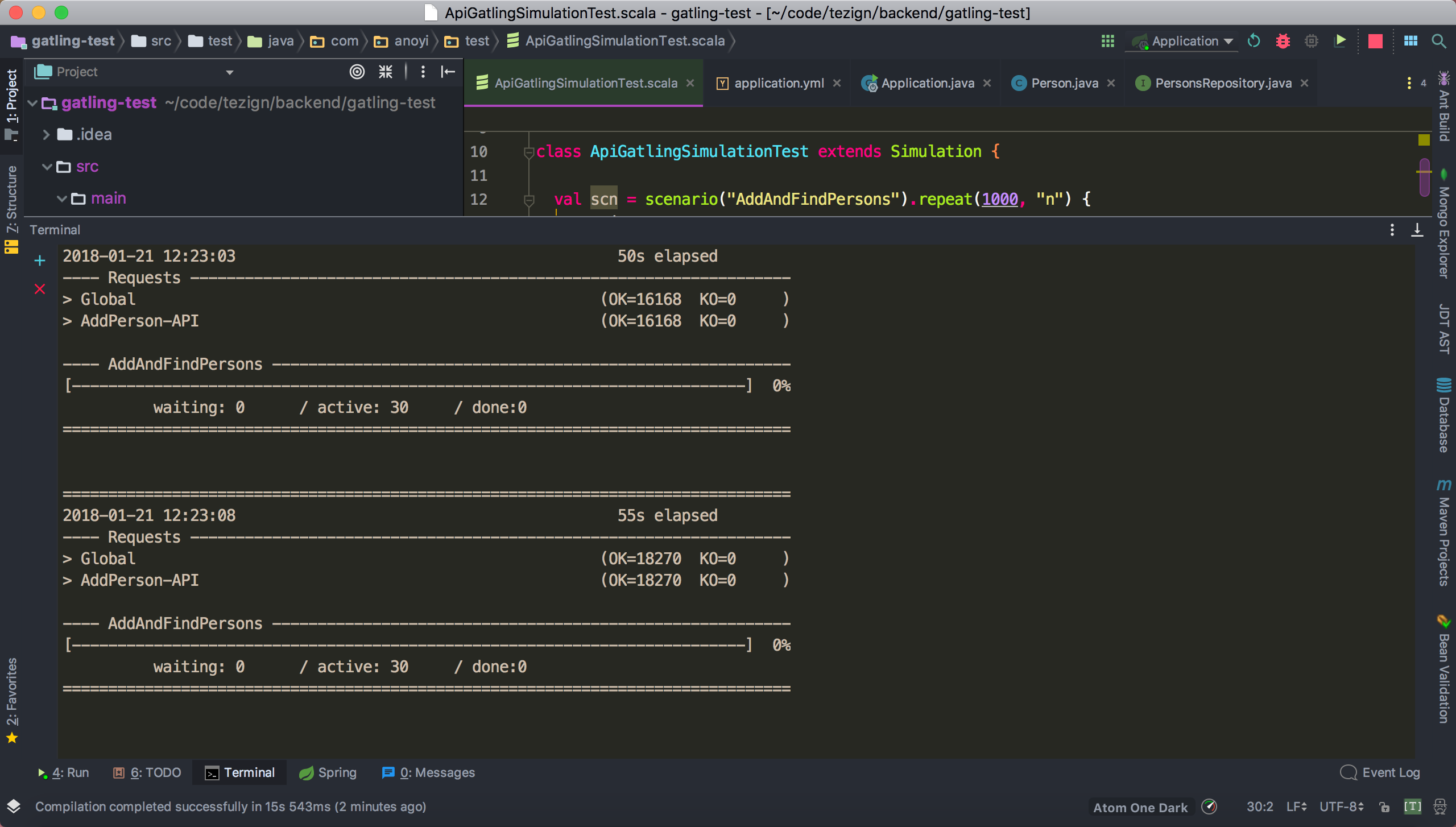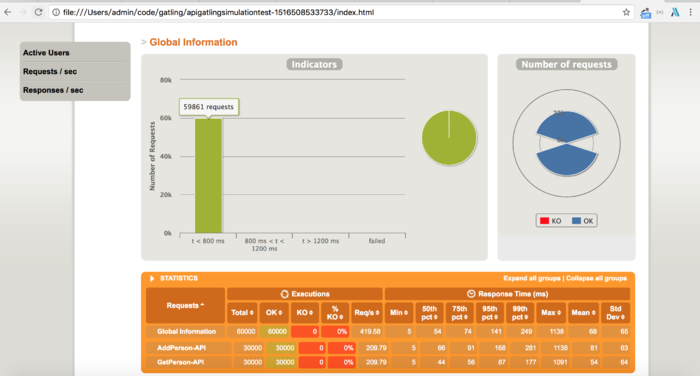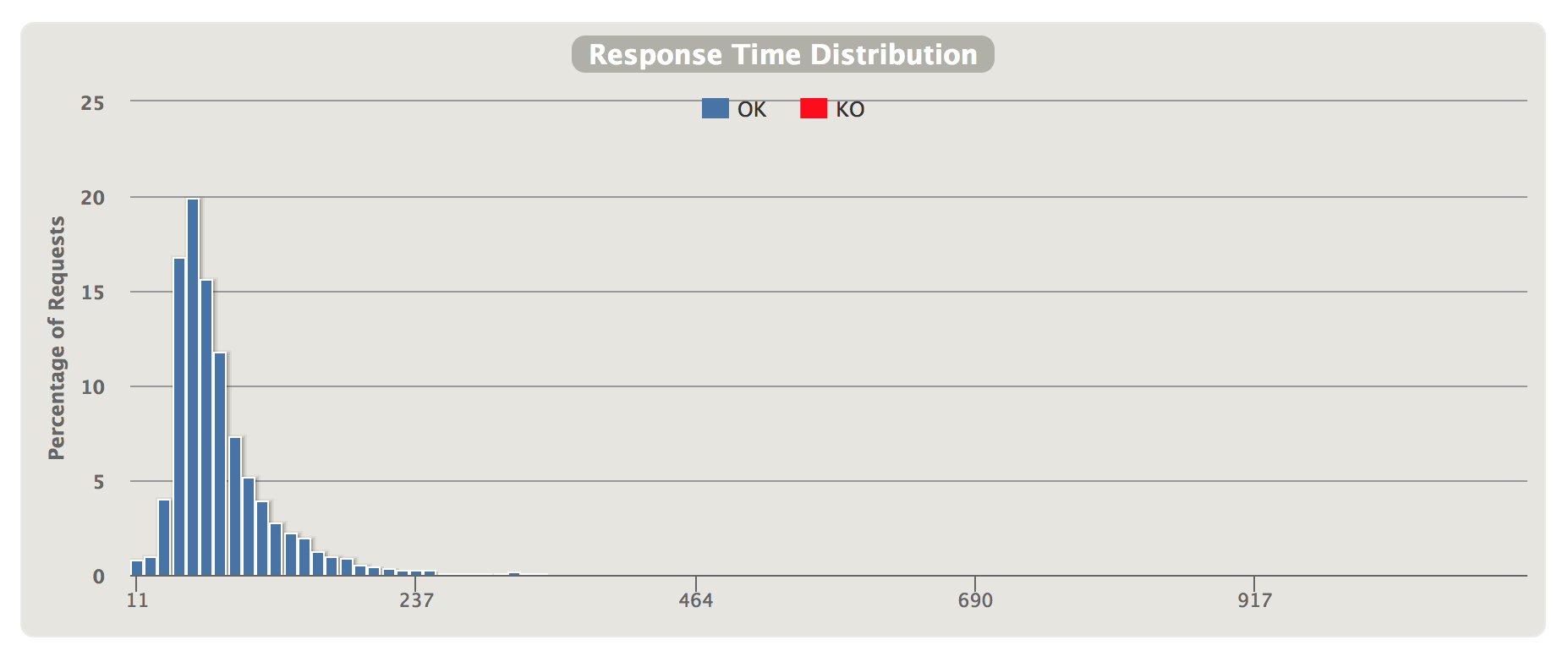Before an application on-line, how many people have done performance testing?
It estimated that most developers pay more attention to functional testing, and will provide some unit testing and integration testing use cases. Sometimes, however, affect the performance of loopholes lead to more serious business than the undiscovered vulnerabilities, vulnerabilities that affect performance because the entire system, not just a business process.
Many of you may have heard the JMeter , but today will introduce competitive solutions - Gatling . It can generate a variety of reports, including all test cases indicators collected. This feature seems to be better than JMeter.
Before discussing Gatling, first understand the two types in the theory of knowledge, performance testing, load testing and stress testing:
- Load testing (the Load Testing) : Load testing is a major software system in order to test whether the target design requirements documents, such as software in a given period, the maximum number of concurrent user support, software request error rate, etc., mainly software testing performance of the system.
- Stress test (Stress Testing) : stress testing is mainly to test whether the system hardware design to achieve the performance goals of requirements documents, such as cpu utilization in a given period, the system, memory usage, disk I / O throughput, network throughput etc., stress testing and load testing biggest difference is that different testing purposes.
Gatling Profile

Gatling is a powerful load testing tool. It is for ease of use, maintainability and high performance design.
Out of the box, Gatling with excellent support for the HTTP protocol, making it the tool of choice for load test any HTTP server. Since the core engine is actually a protocol agnostic, so can implement support for other protocols, for example, Gatling JMS support is also provided.
As long as the underlying protocol (such as HTTP) can be implemented in a non-blocking manner, Gatling architecture is asynchronous. This architecture can be used as a virtual user message instead of a dedicated thread to achieve. Therefore, running thousands of concurrent virtual users is not a problem.
Gatling Quick Start Practice
Create a Spring Boot application that provides RESTful API, for testing
https://github.com/ChinaSilence/gatling-test.git
If you have your own test Web applications can ignore this step!
Start the database
The sample code in dependence of the of PostgresSQL Github, so the first start the database, the easiest way is of course slightly Docker:
docker run -d \ --name postgres \ -e POSTGRES_DB=gatling \ -e POSTGRES_USER=gatling \ -e POSTGRES_PASSWORD=gatling123 \ -p 5432:5432 \ postgresInstall scala environment in IDEA
Scala plugin installation

Installation scala SDK

Write performance test scripts
Each test should inherit a Gatling
Simulationclass, in which you can use to declare a Gatling Scala DSL scene list. The goal here is to run 30 clients, while sending 1,000 requests. First, the client by callingPOST /personsthe method add data to the database; then, by calling the attemptGET /persons/{id}to query the data using the id method.class ApiGatlingSimulationTest extends Simulation { val scn = scenario("AddAndFindPersons").repeat(1000, "n") { exec( http("AddPerson-API") .post("http://localhost:8080/persons") .header("Content-Type", "application/json") .body(StringBody("""{"firstName":"John${n}","lastName":"Smith${n}","birthDate":"1980-01-01", "address": {"country":"pl","city":"Warsaw","street":"Test${n}","postalCode":"02-200","houseNo":${n}}}""")) .check(status.is(200)) ).pause(Duration.apply(5, TimeUnit.MILLISECONDS)) }.repeat(1000, "n") { exec( http("GetPerson-API") .get("http://localhost:8080/persons/${n}") .check(status.is(200)) ) } setUp(scn.inject(atOnceUsers(30))).maxDuration(FiniteDuration.apply(10, "minutes")) }Run Spring Boot application

Run test scripts
Maven plug-in configuration parameters
<build> <plugins> <plugin> <groupId>io.gatling</groupId> <artifactId>gatling-maven-plugin</artifactId> <version>${gatling-plugin.version}</version> <configuration> <!-- 测试脚本 --> <simulationClass>com.anoyi.test.ApiGatlingSimulationTest</simulationClass> <!-- 结果输出地址 --> <resultsFolder>/Users/admin/code/gatling</resultsFolder> </configuration> </plugin> </plugins> </build>Test execution
mvn gatling:execute
View test report
Global Report

Single interface details report




Acknowledgments
Links: https://www.jianshu.com/p/cdd9d29256c0